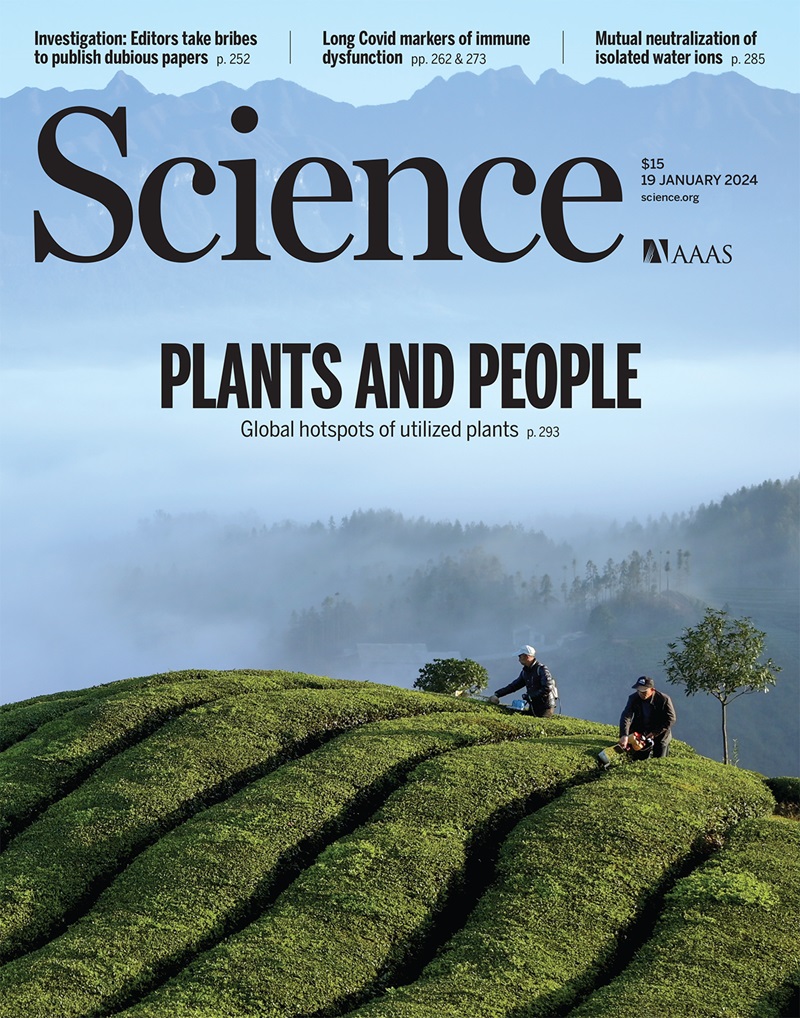The emergence and demise of giant sloths
IF 44.7
1区 综合性期刊
Q1 MULTIDISCIPLINARY SCIENCES
引用次数: 0
Abstract
The emergence of multi-tonne herbivores is a recurrent aspect of the Cenozoic mammalian radiation. Several of these giants have vanished within the past 130,000 years, but the timing and macroevolutionary drivers behind this pattern of rise and collapse remain unclear for some megaherbivore lineages. Using trait modeling that combines total-evidence evolutionary trees and a comprehensive size dataset, we show that sloth body mass evolved with major lifestyle shifts and that most terrestrial lineages reached their largest sizes through slower evolutionary rates compared with extant arboreal forms. Size disparity increased during the late Cenozoic climatic cooling, but paleoclimatic changes do not explain the rapid extinction of ground sloths that started approximately 15,000 years ago. Their abrupt demise suggests human-driven factors in the decline and extinction of ground sloths.
巨型树懒的出现和消亡
多吨食草动物的出现是新生代哺乳动物辐射的一个反复出现的方面。在过去的13万年里,这些巨兽中的一些已经消失了,但对于一些巨型食草动物谱系来说,这种崛起和崩溃模式背后的时间和宏观进化驱动因素仍然不清楚。通过结合全证据进化树和综合尺寸数据集的特征建模,我们发现树懒的体重随着主要生活方式的转变而进化,与现存的树懒相比,大多数陆生谱系通过较慢的进化速度达到了最大的体型。在晚新生代气候变冷期间,体型差异增加了,但古气候变化并不能解释大约15000年前开始的地懒的迅速灭绝。它们的突然灭绝表明,人类活动导致了地懒数量的减少和灭绝。
本文章由计算机程序翻译,如有差异,请以英文原文为准。
求助全文
约1分钟内获得全文
求助全文
来源期刊

Science
综合性期刊-综合性期刊
CiteScore
61.10
自引率
0.90%
发文量
0
审稿时长
2.1 months
期刊介绍:
Science is a leading outlet for scientific news, commentary, and cutting-edge research. Through its print and online incarnations, Science reaches an estimated worldwide readership of more than one million. Science’s authorship is global too, and its articles consistently rank among the world's most cited research.
Science serves as a forum for discussion of important issues related to the advancement of science by publishing material on which a consensus has been reached as well as including the presentation of minority or conflicting points of view. Accordingly, all articles published in Science—including editorials, news and comment, and book reviews—are signed and reflect the individual views of the authors and not official points of view adopted by AAAS or the institutions with which the authors are affiliated.
Science seeks to publish those papers that are most influential in their fields or across fields and that will significantly advance scientific understanding. Selected papers should present novel and broadly important data, syntheses, or concepts. They should merit recognition by the wider scientific community and general public provided by publication in Science, beyond that provided by specialty journals. Science welcomes submissions from all fields of science and from any source. The editors are committed to the prompt evaluation and publication of submitted papers while upholding high standards that support reproducibility of published research. Science is published weekly; selected papers are published online ahead of print.
 求助内容:
求助内容: 应助结果提醒方式:
应助结果提醒方式:


